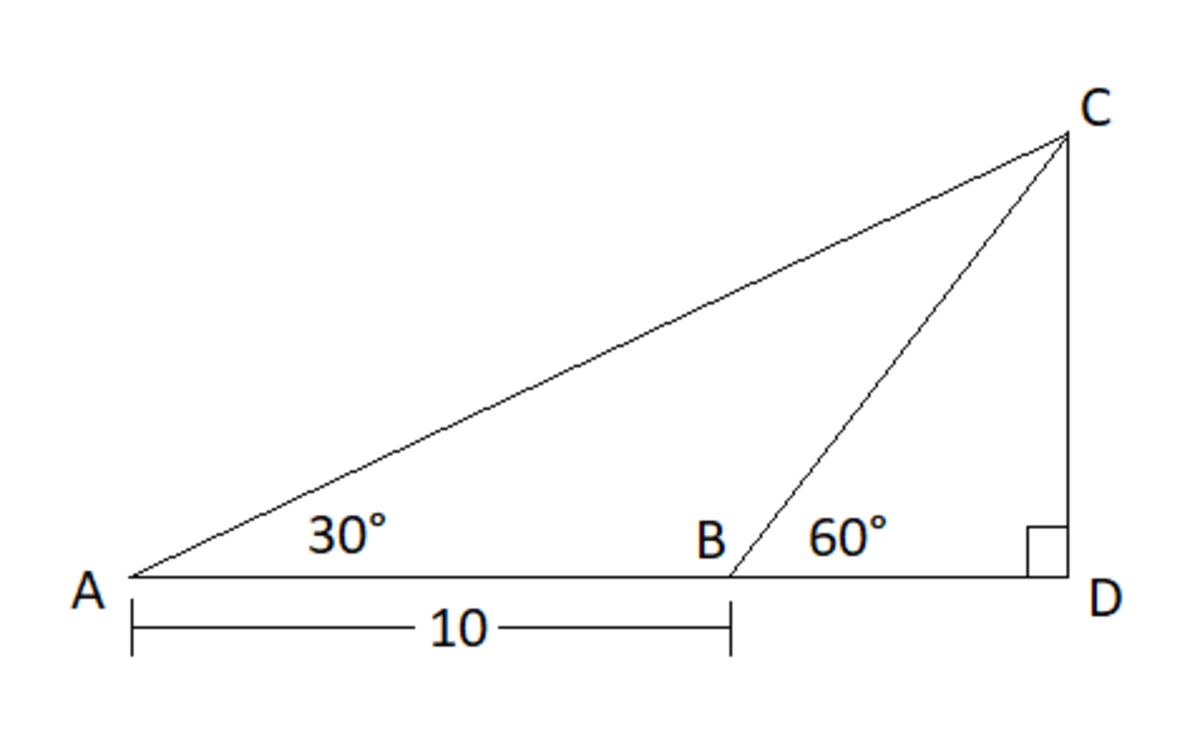Find C D

From the above diagram, find the length C D . The length can be expressed as a b , where a and b are positive integers, with b square-free, enter a + b .
The answer is 8.
This section requires Javascript.
You are seeing this because something didn't load right. We suggest you, (a) try
refreshing the page, (b) enabling javascript if it is disabled on your browser and,
finally, (c)
loading the
non-javascript version of this page
. We're sorry about the hassle.
2 solutions
Let C D = x and B D = y .
In right triangle △ A D C , tan ∠ C A D = A D C D ⟹ tan 3 0 ° = y + 1 0 x ⟹ 3 x = y + 1 0
In right triangle △ B D C , tan ∠ C B D = B D C D ⟹ tan 6 0 ° = y x ⟹ x = 3 y
Solving the above two equations, y + 1 0 = 3 x = 3 ( 3 y ) = 3 y ⟹ y = 5 ⟹ x = 5 3
Therefore, C D = 5 3 ⟹ a + b = 8
By the exterior angle theorem, ∠ A C B = ∠ C B D − ∠ C A B = 6 0 ° − 3 0 ° = 3 0 ° , so that △ A B C is isosceles and B C = A B = 1 0 .
Then for △ B C D , C D = B C sin ∠ C B D = 1 0 sin 6 0 ° = 5 3 .
Therefore, a = 5 , b = 3 , and a + b = 8 .